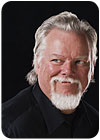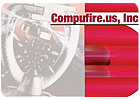
Back in the early 1970s, Pete Lazdins was a recent college graduate with an uncertain future. At the suggestion of a close friend’s father, Lazdins applied for a hydraulics clerk position with a well-known sprinkler manufacturer in Cleveland, OH. The rest, as they say, is history. For 35 years now, Lazdins has been in the fire protection business-either working for a contracting company in fire protection (sprinklers) or working for a manufacturing firm, selling fire protection sprinkler devices to the sprinkler contractors.
Currently, Lazdins, who is an SET, provides fire protection license assistance and sells fire pumps as president of Compufire.us Inc., based in Seminole, FL. Recently, he spent some time with fire protection columnist and specialist Mark Bromann, SET, CFPS, to talk about Lazdins’ long career and his views on the changes and trends taking place in fire sprinklers.
MB: How did you get started in the fire protection business?
Pete Lazdins: I was looking for work. I was out of school and had moved back to Cleveland, OH, from Phoenix, AZ. I originally grew up outside of Cleveland. For high school and college I had lived in Phoenix, and after getting a college education down there, there was really no work other than flipping hamburgers at McDonald’s. I moved up to Cleveland, and a friend of my father’s, who was an engineer, sent me over to a well-known sprinkler manufacturer. I went and applied there, and they made me a hydraulics clerk.
What type of training did that company provide?
At that point in time, the company would put anybody who was going into design or sales through a four-week design school in Cleveland and then an additional two-week sales training course. I was learning hydraulics and design at the same time. It was very structured, and I think a very good foundation for the industry at the time.
You have had quite a full career, in terms of wearing many different hats for both a contracting company and a manufacturing firm. What components are you selling now?
Now I sell fire pumps for Peerless Fire Pump. I cover about three quarters of the state of Florida.
Does it happen very often that you will get into a situation where you will have new construction with a fire pump and standpipes only?
Sometimes for parking garages, but mostly the State of Florida requires anything above three stories, and I believe 15,000 square feet, to be fully protected with sprinklers.
After years of designing and becoming fairly well known as a hydraulics expert, what was it like to all of a sudden be in the position of providing plan reviews?
It was a challenge because it’s definitely wearing a different hat. In plan review, you are sort of required to take more of a hard-nosed attitude about shortcuts than we’ve taken along the way in the past.
Right. Like, if you are calculating a system for an automatic fire sprinkler contractor, given that you’ve got a decent water supply, where in the system would you personally try to save on pipe sizing?
Normally, since most of the repetition is in the branch lines, it prices out more economically to get the branch line sizing smaller because you’d have a lot more branch line going up into the air than you do you cross mains or feed mains.
Yes, that’s for sure. In Florida, at the present time, how prevalent are CADD drawings vs. hand drawings on fire sprinkler systems?
Most of the contractors that I deal with are up on CADD. There are a handful of old guys like me kicking around that still use paper and pencil for drawings, so I would say, right now, by far, the majority are CADD drawings.
When you were reviewing drawings, which would you prefer to see, or did it make a difference?
It didn’t really make a difference. When I was reviewing drawings in the late ’90s, it was probably 50/50. Smaller contractors had hand drawings; the larger contractors were on CADD. Somebody can make mistakes just as well on CADD as they do on paper, so it really didn’t make that much of a difference.
On all these projects you’ve worked on over the years, beginning way back in 1972, have any fires occurred in buildings you designed or sold equipment for?
Yes. I designed a number of projects when I was with the sprinkler company in Milwaukee, and I knew of two or three projects that, within a year of the buildings being opened and the systems being in service, they experienced fires-small ones-that were contained by two or three sprinkler heads operating.
Give me an idea of how well versed you feel municipal officials are today in terms of knowledge of the NFPA codes.
Much more so today than 30 years ago when I started, and less liable to stick their necks out and take a wild guess at a code interpretation.
And how well versed do you feel these guys are today in terms of understanding hydraulics?
Again, much better than they were before-they seem to have a lot better grasp of it. Ten to 20 years ago, I think they were at the point when they were forced into reviewing hydraulics, and they actually had no clue of what they were looking at, so some of them would just blindly stamp it “approved.”
When you were selling sprinkler heads, what was the best new sprinkler that came out-the best advancement in technology?
The small glass bulb quick-response, fast-response type of sprinkler heads. That was in the mid ’90s.
Speaking of residential, let me ask you to make a prediction. In what year do you think residential fire sprinklers are finally going to become the norm for new construction?
I would say pretty much within the next 10 years. At that point, I predict that, along with all the other plumbing fixtures in a home, sprinkler heads will be in there-but they will be part of the plumbing system and not a separate sprinkler system.
Let me change gears here. How often do you sell a vertical in-line pump vs. a horizontal electric model?
For the market here in Florida, the horizontal electric is, I would say, about 60% of the business. Then we would probably have 30% that are diesel horizontal pumps and about 10% that are the vertical in-line electrics. It’s probably because, pricewise, the vertical in-lines are priced very near the horizontals, but right now there is more of a maintenance issue with the vertical in-lines than a horizontal.
Do you get any dry systems in Florida at all?
Yes, in the northern part of the state. Actually, once you get north of the Tampa Bay/Orlando area, the northern portion of the state, you run into dry systems in the warehouses. Or, if you end up with an attic that is sprinklered, that portion of the state has an isobar that runs through Ocala per the NFPA standards. So pretty much, Ocala, Tallahassee, Jacksonville, that portion to the state is subject to freezing. When I worked for a sprinkler manufacturer, we actually sold more dry pipe valves in the southern states than we did in northern states.
What about areas where there is no water supply. How prevalent in Florida are reservoirs with a vertical turbine pump above?
They are more prevalent in the outlying areas. Right now, for the last few years, the growth spurt has been along the coast, along existing cities where the utilities haven’t been extended out to the beach and the beach communities where the bulk of the condo buildings have been going up. The center part of the state, sure, we end up with vertical turbines and wells. We end up with vertical turbines taking suction out of retention ponds, that sort of thing, but the majority of the work here in Florida is still off of existing city water supplies.

No. Florida does not have a requirement for licensing of the fitters, only the sprinkler contractor is licensed. There is a separate state exam in Florida for contractor licensing, and NICET currently is not reciprocal or not being recognized in the state of Florida yet.
How about the plan reviewers, are they licensed?
Yes, I believe they are.
Who do you feel should be licensed in the industry?
I think the sprinkler contractor needs to be licensed and carry liability insurance. That pretty much covers it.
Is Florida a right-to-work state?
Yes, Florida is a right-to-work state, so there are union contractors here in Florida, but the majority is merit shop contractors.
Do you run into many retrofit situations?
Everybody has been waiting for that business to kick in, I believe, since the original condo law was passed back in 1975. The condo law has been amended and extended, and the remaining condos that are more than three stories high still have until 2014 before they have to be retrofitted. In the next 10 years, they’ll probably be extended and amended again, so that is just being stretched out and stretched out.
As a seasoned fire protection professional, help me understand: How can you converse with an authority having jurisdiction in a situation involving a stalemate between an installer and a municipality? How can this best be worked out?
I’ve seen them all. Usually it’s going to be the installing contractor who tends to get as much ammunition on his side as he can, and I haven’t been involved in a stalemate situation with any approving authority. From what I have seen, personally, and what I have seen written in the trade magazines, it seems that the installing contractor tries to get as much information and then tries to get interpretations from either NFPA or one of the associations to assist them.
What do you see as the biggest problem in the business of fire sprinkler design affecting installations today?
Right now it’s just a matter of manpower. Still, whether you are doing drawings by hand, as those old guys are doing, or if you’re doing drawings by CADD, there are just not enough people going into the industry to supply the demand. I think there is a tremendous shortage in design and there’s even a larger shortage of installers.
At this stage in your career, what do you like best about your job?
Probably meeting a lot of old friends that I’ve made over the years and making new friends. Also it’s a toss-up between the climate in Florida and the nature of the fire pump business here that seems a little more laid back, so it’s a lot more enjoyable.
What do you pinpoint as the best recent industry advancement?
Basically the entire industry has made technological and modernization advances and implemented new products and new techniques to save labor. That is something that our industry really has been doing the entire time that I have been in it. You know, when I started in 1972, the big thing was grooved couplings and welded outlets on the mains. And today, we’re currently using quick-response, extended-coverage sprinkler heads and getting into the large ESFR type of heads for the high storage commodities. The industry has not sat back during the whole period of time that I have been involved. It has always been moving ahead, technologically. In 1972, the industry was insurance-company mandated. Now it’s code-driven.